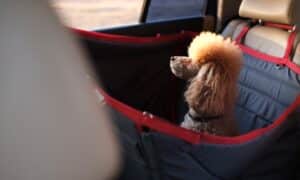Many people become frustrated with a dog that just won't listen. They want to understand their dog and develop communication methods that the dog will understand. Fortunately, there are a number 'friendly' training methods that you can use to help you communicate with your dog, which will help eliminate behavior problems.
Most behavior problems like biting, jumping on strangers, urinating on the floor, and barking, result from a failure to communicate properly with your dog. Basically, the dog does not understand what you are trying teach him. 'Dog-Friendly' methods of training means you can communicate and dog training without inflicting pain or anger. They are positive reinforcement techniques that are fun for both you and your dog.
Using friendly training methods that include positive training techniques will help you develop a trusting life-long bond with your dog. To build a strong owner-dog relationship, based on trust and mutual respect, incorporating the following techniques will help:
Kindness and Patience is Essential: Yelling, hitting, using choke collars, or electric shock, is not only cruel, but will not train your dog. He will develop a fear of you and most likely develop other behavioral problems such as aggression, trust, love, and respect, are essential to understanding and communication with your dog. Of course, your dog should know its place in the family, and that you are the 'top dog' so to speak, but you do not have to do this using punishing and inhumane methods. It won't work. Friendly training helps you work with your dog's natural instincts.
Training and Play: One thing that dogs love is play. Make your training fun. Motivate the dog with treats and praise when he accomplishes a task. For instance, if your dog is jumping on you, praise your dog every time he greets you by sitting. When you meet him, help him with sitting and then praise him or give him a treat. Repeating the sitting technique, the dog will learn he is rewarded for sitting and not jumping on you. Make sure you are consistent with the training technique and reward. You do not want to confuse the dog.
Association and Repetition: Dogs do not have the ability to learn something once. You have to associate the word with the action you want it to perform. For instance, if you want it to lie down, you can use the correct signal and you can lay down with your dog. After it lies down, you can reward him with a treat or praise. Keep repeating the method and your dog will learn to associate the word and action. Connecting words with actions in a positive way is essential to success.
Arrange for Your Dog to Succeed: Throughout your training session, make sure you incorporate easy techniques so you can reward him. The reward for succeeding will stay with him. He will be a much happier dog. Ending the session with a successful training technique will leave him feeling happy.
Keep Positive: Some dogs will take longer to learn than others. If you get angry or show frustration, your dog will pick up on your negative energy. The dog will be confused and react to your negative emotions by displaying negative behavior.
Clicker Reinforcement: Use a clicker device to make a 'click' sound when your dog does something right. They will begin to learn that the sound means they did something right.
Dogs are never entirely trained. As the owner, you must keep up with the positive reinforcement techniques. If you don't, the dog may forget some learned behaviors. Communication is critical to creating a life long bond with your dog. It is important to observe how your dog reacts to situations so you learn its body language. Talk to your dog in a kind and loving voice and you will soon find yourself with a loyal life friend.





